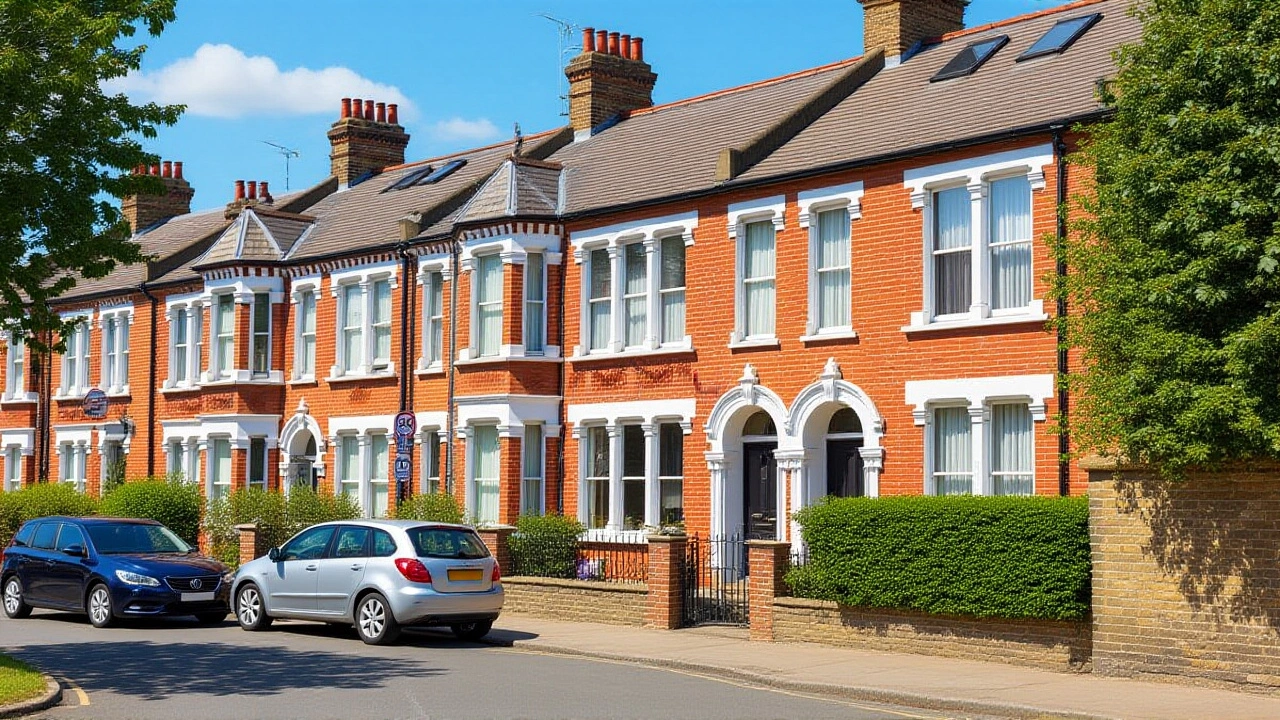For the first time in recorded history, UK tenants are handing over 44% of their monthly income just to keep a roof over their heads — a staggering figure that’s pushing families to the brink. According to Office for National Statistics data released in September 2025, the average private rent across the UK hit £1,348 per month for the 12 months ending in August 2025, a 5.7% year-on-year jump that continues to outpace both inflation and wage growth. The numbers don’t lie: while wages rose 4.8% and inflation cooled to 3.8%, rent climbed faster — and harder — than ever before. This isn’t just a cost-of-living issue. It’s a structural collapse in housing affordability.
The Stark Reality of Regional Divides
The national average masks a brutal truth: where you live determines whether you’re renting or just surviving. In Kensington and Chelsea, London, the average monthly rent hit £3,614 — more than the median annual income in many parts of the country. Meanwhile, in Dumfries and Galloway, Scotland, renters paid just £523. That’s a six-fold gap between the most and least expensive areas. Outside London, Oxford led the pack at £1,897, while one-bedroom flats averaged £1,094 across the UK — barely enough to cover a studio in most cities. Detached homes? £1,536. Four-bedroom properties? £2,010. The market isn’t just expensive. It’s fractured.Wales saw the steepest annual increase at 7.8%, though that’s a reprieve from the 21.4% surge in January 2025. Even so, £811 a month in Cardiff or Swansea still eats up half the income of a minimum-wage worker. The data from Office for National Statistics confirms what frontline charities have been screaming for years: housing is no longer a basic need — it’s a luxury reserved for those who can afford to gamble on rent.
Who’s Speaking Up?
Ben Twomey, chief executive of Generation Rent, put it bluntly in an August 30 interview: “Homes are the foundations of our lives, but rents continue to rise faster than our wages, swallowing more and more of our income.” His words aren’t rhetoric — they’re a warning. In 2024, over 120,000 households in England alone were accepted as homeless by local authorities. Many more are living in temporary B&Bs or sofa-surfing. “High rents push people into homelessness,” Twomey added. “They pull children into poverty and prevent people from saving for the future.”Meanwhile, William Reeve, CEO of Goodlord, offered a chilling forecast. In a September 5 statement, he called the current lull “the calm before the storm.” His concern? The Renters' Rights Bill, expected to pass in late 2025, will ban tenant bidding wars — a practice landlords used to inflate prices. But instead of lowering rents, Reeve warns, landlords will simply raise asking prices to compensate. “New compliance requirements will increase costs,” he said. “Some of those will be passed on to tenants.”
A Market in Volatility
The rental market hasn’t been stable since 2023. In August 2024, rents were tracking 10% higher than the previous year — a blistering pace. By December 2024, the Goodlord Rental Index showed a 2% month-on-month drop, the fifth consecutive decline. But here’s the twist: even that dip didn’t make things cheaper. December 2024 rents were still 3.3% higher than December 2023. The South East led annual growth at 5.7%; the North East lagged at just over 2%. This isn’t a national trend — it’s a patchwork of chaos.What’s driving this? A shortage of supply. The UK built fewer homes than needed for a decade. Landlords, many of them buy-to-let investors, are holding onto properties longer, waiting for prices to climb. Meanwhile, mortgage rates remain high, locking potential first-time buyers out of the market. So they stay renters — and pay more.
What Comes Next?
The Renters' Rights Bill is set to introduce protections like longer tenancies, limits on rent hikes, and an end to no-fault evictions. But experts like Reeve and Twomey agree: without a massive increase in social housing and rent controls, these reforms will be like putting a bandage on a broken leg.Local councils are scrambling. Birmingham has started a pilot for rent caps in high-pressure areas. Manchester is exploring community land trusts. But without national intervention — and funding — these are drops in an ocean. The Bank of England has flagged housing as a key risk to economic stability. The Treasury is silent.
And the human cost? It’s mounting. One in five renters now says they’ve skipped meals to pay rent. One in seven has considered moving abroad. A 28-year-old teacher in Leicester told The Independent: “I make £28,000 a year. My rent is £1,100. I have no savings. I can’t afford a deposit. I’ll be renting until I’m 40 — if I’m lucky.”
Frequently Asked Questions
Why are rents rising faster than wages in the UK?
Rents are rising faster than wages because housing supply hasn’t kept pace with demand — especially in cities. Over the past 15 years, the UK built only about half the homes needed annually. Meanwhile, buy-to-let investors, low mortgage rates in 2020–2022, and limited social housing have driven up competition. With fewer options, landlords can charge more, and tenants have little leverage. Inflation and wage growth simply can’t catch up.
How does the Renters' Rights Bill affect renters and landlords?
The Renters' Rights Bill will ban tenant bidding wars, require longer tenancies (minimum three years), and restrict rent increases to once a year. But landlords fear higher compliance costs — like mandatory EPC upgrades and safety checks — will reduce profits. Many plan to raise rents before the law takes full effect. Experts predict short-term price spikes, even if long-term stability improves.
Which areas of the UK are most affected by the rent crisis?
London remains the epicenter, with Kensington and Chelsea averaging £3,614/month. The South East, including Oxford and Reading, follows closely. Wales saw the highest annual growth (7.8%) in 2025. Meanwhile, regions like the North East and Scotland’s rural areas have lower rents but also lower wages, meaning the 44% rent-to-income ratio is still crushing there. No region is untouched.
Is there any sign the rent surge is slowing?
The rate of rent growth did ease slightly — from 5.9% in July 2025 to 5.7% in August — the first drop in momentum since early 2024. But the absolute rent level is still at a record high. Month-on-month dips, like the 2% fall in December 2024, are temporary corrections, not trends. With demand outstripping supply and no major new housing projects coming online before 2027, experts say the underlying pressure remains intense.
What can renters do to cope with soaring rents?
Some are moving further from city centers, sharing homes with multiple flatmates, or applying for housing benefit — though wait times can be months. Others are turning to housing associations or council waiting lists, which have average wait times of 2–5 years. A few are leaving the UK entirely. But without systemic change — like rent controls or a surge in social housing — individual coping strategies are temporary fixes for a structural crisis.
How does this compare to other countries?
The UK’s 44% rent-to-income ratio is among the highest in the developed world. In Germany, it’s around 28%; in Canada, 31%. Even in New York City, where rents are famously high, the average is closer to 35%. The UK’s combination of weak tenant protections, low social housing stock, and high private-sector dominance makes it uniquely vulnerable. Housing experts say it’s a perfect storm of policy failure.





